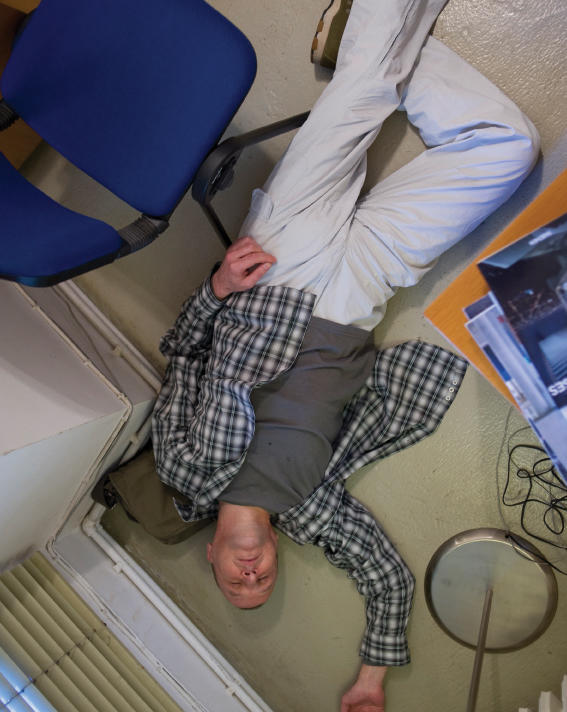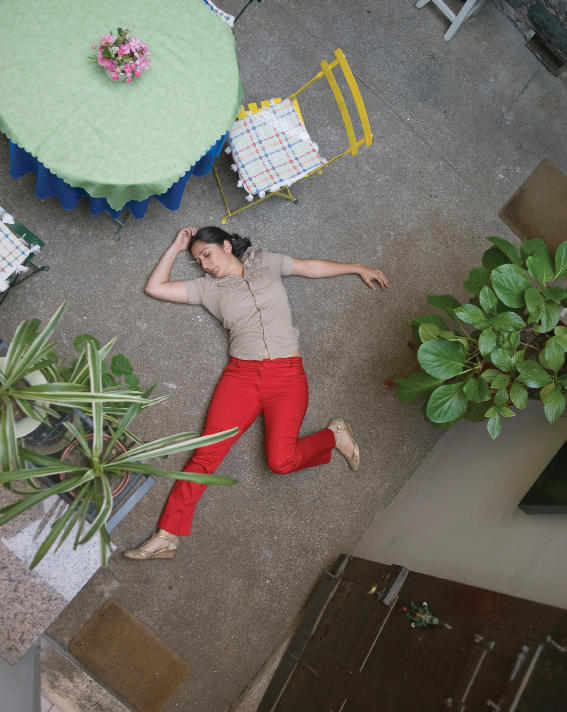
Istanbul
Human Conditions
Istanbul Modern
September 10, 2008–January 25, 2009
Four years have passed since Istanbul Modern opened with a show of political fireworks. In December 2004, Prime Minister Recep Tayyip Erdogan used the museum as a site from which to announce the first round of summit talks on Turkey’s European Union membership bid, and the space, sleek and modern as it is, has since been seen as a synonym for the country’s European ambitions overall. Still, the museum’s position in the city, both as an art space and as a meeting ground, seems far from clear.
Rosa Martinez, the museum’s first chief curator and a veteran of high-profile biennials, is gone, as is David Elliott, the museum’s director, who arrived in Istanbul with a three-year plan but left some seven months into his tenure. Everyone seems to loathe the permanent exhibition on the ground floor, which narrates the history of modern Turkish art (though some members of the public do begrudgingly credit the museum for telling such a story at all). When cruise ships the size of an office building aren’t blocking the view, the museum restaurant overlooking the Bosporus remains the biggest and most reliable draw.
The young museum’s brief history of temporary, rotating exhibitions has been shaky at best. Too many were merely exercises in recycling — shuffling in works from past editions of the Venice Biennale, greatest hits from the Istanbul Biennial, the history of Magnum photographers in Turkey, and so on. And while this fall a major show spilling through the main galleries, Held Together With Water, was full of great work, more than anything it may have managed to highlight Istanbul Modern’s questionable marriage of art and commerce (the selections were all culled from the corporate collection of Austria’s largest energy producer, which just cinched a deal with Sabanci Holding to create a joint venture angling for a major share of Turkey’s electricity sector). Where the museum seems to be making a critical dent, however, is with the smaller photography shows and video programs that are periodically on view in the far corners of the lower floor.
Human Conditions, curated by Istanbul Modern’s photography specialist, Engin Özendes (who seems to have the stomach to stick around), is a fairly simple yet unabashedly sprightly exhibition focused on the work of Sitki Kösemen on one side, Ergün Turan and Süreyya Yilmaz Dernek on the other. Özendes has taken advantage of the long and narrow configuration of the photography gallery to re-create the ambiance of a bustling street. The prints lining either side of the space give viewers the sensation of walking through a crowded causeway, which works, in part, because the series on the left, by Turan and Yilmaz Dernek, pays elusive tribute to the history and legacy of Ottoman-era street photography.

Turan and Yilmaz Dernek grab passersby in neighborhoods like Taksim, Bebek, Süleymaniye, Dolapdere, Üskudar, and Erenköy and have them pose in front of backdrops that commercial photographers typically use for souvenir shots. In these cases, however, the backdrops are blank; the subjects project their own identities onto the frame. As a result, the images are reminiscent of major archival portrait projects such as August Sander’s People of the Twentieth Century, and tinged with a Diane Arbus–style predilection for, well, freaks. Everyone is inherently “othered,” appearing eccentric or idiosyncratic, to the extent that Turan and Yilmaz Dernek thoroughly deconstruct the notion that there is any such thing as the Other at all. A disjointed text splayed out on the floor of the exhibition space — “Am I a stranger?” “Is my life mine?” — amplifies the universality of urban anxiety.
On an opposite wall are populated prints of a different sort. Kösemen’s series consists of large-format, full-figure portraits, but here all the subjects are themselves splayed out on the floor — on the pavement, in public parks, or spilling out of elevators. Everyone in the artist’s photographs is, in other words, playing dead. A picture of a young woman in an evening gown — eyes closed, hair tussled, limbs flung out in every direction — reveals Kösemen’s experience in fashion photography. But as a sequence of images, the works also bring to mind Guy Bourdin’s experiments with film noir, in which every studio setup resonated like a crime scene.
Perhaps the best part of the show, however, is the journal placed at the end of the long space. Here, viewers are asked to write a story that they imagine might lie behind an image. In Kösemen’s pictures, one must question, is the subject dead or just sleeping? Does the subject dream? Also, why did all of the photographer’s subjects agree to pose playing dead, whereas many, we learn, declined to pose more conventionally, standing up? In Turan and Yilmaz Dernek’s pictures, one must read not only the attributes of social circumstance — dress, posture, etcetera — but also the defiance, attitude, and intimacy of people’s expressions. The stories collected reflect not only the collective face of Istanbul but, as the title suggests, some sliver of the human condition as well. Özendes plans to use these stories as inspiration for a subsequent exhibition — which might not set Istanbul Modern straight but could make for another interesting visit.